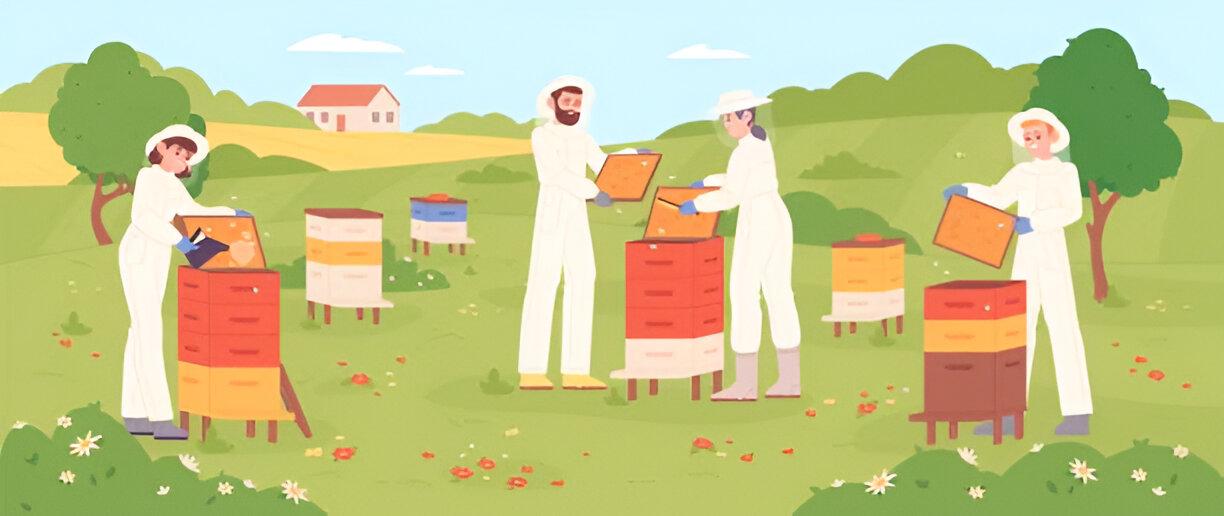Notifications

8 minutes, 20 seconds
-2 Views 0 Comments 0 Likes 0 Reviews

Beekeeping has entered a revolutionary phase with the rise of IoT (Internet of Things) technology. Today’s smart beekeepers are harnessing digital solutions to monitor hive health, temperature, and activity levels without disturbing the bees. With growing threats like climate change, pests, and wildfires, especially the devastating Australian wildfires, integrating smart systems into beekeeping is no longer a luxury but a necessity.
This blog delves into the world of IoT beehive monitoring systems, explores effective tips to keep ants out of the beehive, shares insights on smart beehive heat treatment for winter, and highlights the urgent concern that bees are threatened by Australian wildfires.
An IoT beehive monitoring system is a cutting-edge solution that uses smart sensors, cloud-based software, and real-time analytics to provide data about hive conditions. These systems typically track:
Hive temperature and humidity
Bee activity levels
Weight of the hive (indicating honey production)
Sound frequency and vibration
Presence of pests or intruders
Such systems help beekeepers detect potential issues early, make data-driven decisions, and minimize manual inspections that might stress the bees.
The integration of IoT technology in beekeeping offers several crucial benefits:
Beekeepers no longer need to open the hives frequently. Real-time dashboards and mobile apps provide 24/7 access to hive data.
IoT systems detect anomalies in hive temperature, weight, or sound patterns that may indicate swarming, disease, or queen failure.
Beekeepers can compare hive performance across different colonies, track seasonal trends, and forecast honey yield.
One of the most common and persistent effective Tips to Keep Ants Out of the Beehive issues for beekeepers is ant infestation. Ants are drawn to the sweet smell of honey and can harm bee colonies if not managed effectively.
Use Hive Stands with Moats
Place the beehives on stands with legs sitting in cups filled with oil or soapy water. This creates a barrier that ants cannot cross.
Apply Diatomaceous Earth
Sprinkle food-grade diatomaceous earth around the base of the hive to deter ants without harming the bees.
Grease or Vaseline Barrier
Coat the legs of the hive stand with petroleum jelly or grease. It acts as a slippery surface that ants cannot climb.
Avoid Spills and Crumbs
Keep the area around the hive clean from sugar syrup or honey spills, which attract ants.
Trim Nearby Vegetation
Make sure no leaves or branches touch the hive, giving ants a bridge to access the colony.
IoT sensors can even detect sudden disruptions caused by ants or other invaders, helping beekeepers act swiftly.
The devastating Australian wildfires have had catastrophic effects on ecosystems, and bees are no exception. Millions of bees died or were displaced, severely impacting pollination and biodiversity.
Loss of Habitat: Forest fires destroy the natural nesting sites and foraging grounds of native bees.
Reduction in Floral Resources: With plants burnt to ashes, bees struggle to find nectar and pollen.
Smoke Disruption: Smoke impairs bees’ ability to navigate, affecting their return to hives.
Heat Stress: Excessive heat can kill larvae and queens inside the hive.
By leveraging IoT beehive monitoring systems, beekeepers can prepare and protect their colonies from such extreme environmental challenges. For example, alerts about rising internal hive temperatures during wildfires can prompt evacuation or cooling measures.
Winter is one of the most critical periods for beekeepers. Bees cluster for warmth, and any disturbance in temperature Smart Beehive Heat Treatment for Winter regulation can cause colony losses. One emerging solution is the smart beehive heat treatment system.
It involves controlled heating elements integrated into the hive and governed by smart thermostats and sensors. These systems:
Maintain optimal brood temperature (~34°C)
Prevent hive freezing during cold nights
Kill Varroa mites without using chemicals
Improve survival rates during harsh winters
Eco-Friendly: No chemicals involved
Energy-Efficient: Heaters turn on only when necessary
Safe for Bees: Maintains natural conditions
Automated Monitoring: IoT platforms monitor and adjust the internal temperature
Combining heat treatment with real-time IoT monitoring ensures healthier bees and stronger colonies in the spring.
Modern beekeeping has evolved significantly. Today’s beekeepers can choose between traditional and tech-assisted methods. Let’s look at some popular methods of beekeeping that integrate smart tools:
The most common hive structure, ideal for IoT installations. Sensors are easily fitted, and vertical stacking helps data segregation.
Preferred for natural beekeeping. Add-on devices like sound sensors and temperature loggers can be integrated manually.
Innovative hives that allow honey harvesting without disturbing the bees. IoT cameras and weight sensors can enhance surveillance.
With limited access, IoT remote monitoring is a must. Ensures bees are safe and thriving even in the middle of cities.
Each method can benefit from digital enhancements that ensure efficiency, sustainability, and better bee health.
As environmental challenges escalate, and threats like climate change and wildfires become more common, it’s essential to embrace technology to protect our pollinators. IoT beehive monitoring systems, smart winter heat treatments, and proactive pest management are not just trends they are lifelines for bees and beekeepers alike.
Moreover, with increasing awareness about how bees are threatened by Australian wildfires, the global beekeeping community is uniting to build resilience and sustainability.
Bees are more than honey-makers; they're essential for pollination and biodiversity. In this digital age, beekeepers have powerful tools at their disposal to ensure hive health and productivity. From IoT beehive monitoring systems to smart heat treatments and eco-friendly pest solutions, modern methods of beekeeping are paving the way for a better future.
IoT in agriculture IoT Beehive Monitoring System Smart Beekeeping Bee Health Monitoring Internet of Things for Beekeeping.

